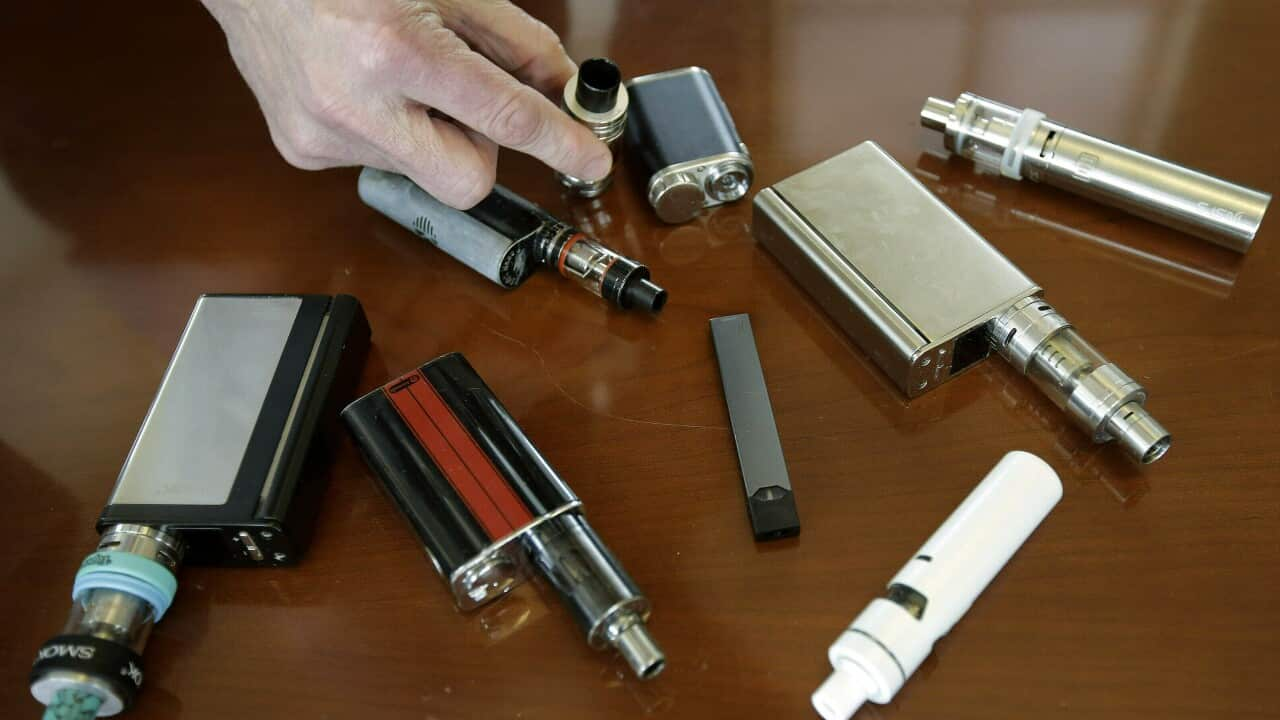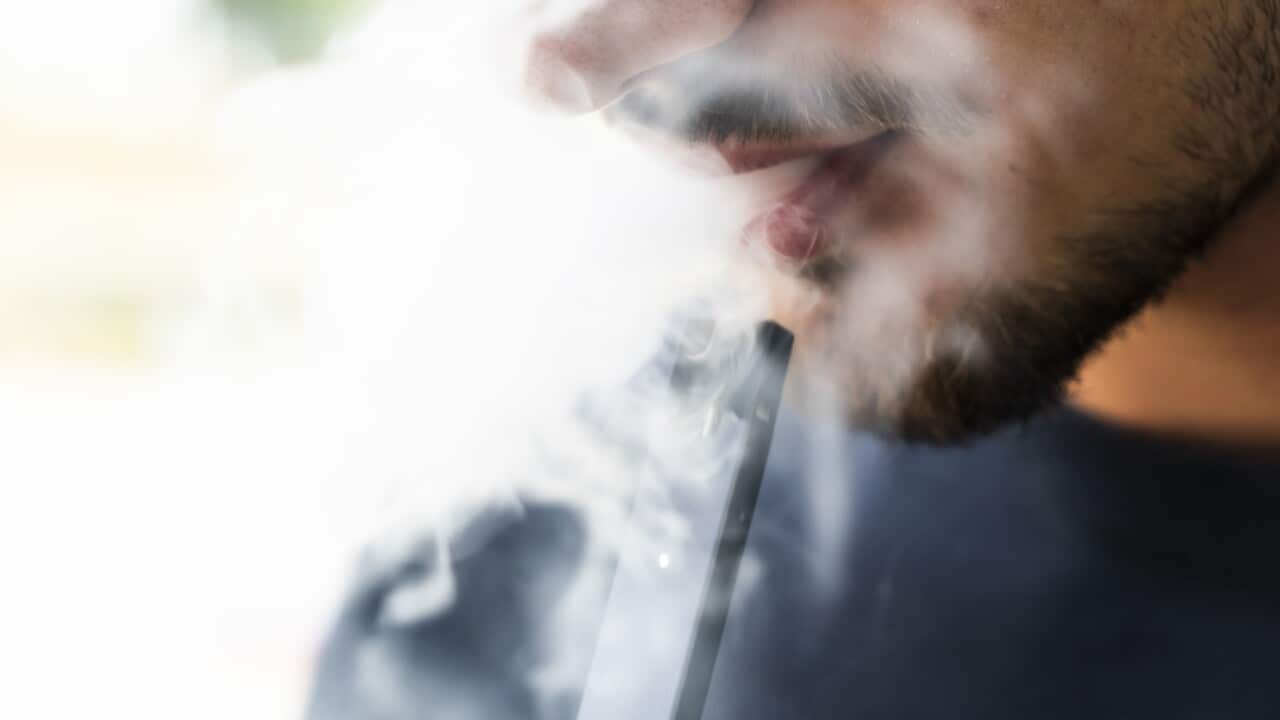Key Points
- The government is cracking down on Australians' ability to buy vapes.
- But they will be available to buy for people who have a prescription for smoking cessation needs.
- Health experts have raised concerns over the effectiveness and safety of prescription vapes.
Over the past 20 years vaping has been promoted by governments, health bodies and tobacco companies as a tool that helps people quit smoking, but health experts say it’s largely ineffective and is harmful in other ways.
Federal Health Minister Mark Butler has announced a $234 million crackdown on vaping will come in next week's budget, to enforce e-cigarettes' legal availability only as a prescription tool to help quit smoking. The move has been broadly praised by the medical community.
But some have questioned why vapes will still be available legally, given the Department of Health’s official advice acknowledges that vaping may not help people quit smoking.
“E-cigarettes are devices that make vapour for inhalation, simulating cigarette smoking. They are sometimes marketed as a way to quit smoking, but there's not enough evidence to show that they help – or are safe,”
Australia's vaping policy stands in contrast to the UK, where the government has recently committed to giving one million smokers a free vaping starter kit.
Emeritus Professor of Health at the University of Sydney, Simon Chapman, told SBS News the best way to quit smoking is to go cold turkey, meaning to completely give up nicotine in one go.
“Around two-thirds to three-quarters of all ex-smokers have quit smoking without any help at all, " he said.
“If you look at vapes head to head with other methods, they are only marginally different."
Other methods that people use to quit smoking include cutting down gradually, using prescription medication, or Nicotine Replacement Therapy which includes using nicotine-filled patches, gum, oral sprays, inhalers, lozenges or tablets.
Professor Chapman, who has researched vaping and smoking for many years and conducted meta-analyses, said his research shows around nine out of 10 people using prescription vapes and the other methods listed above to quit smoking are still smoking 12 months later.
“I can't think of any other drug that you would get from a doctor where they'd say, ‘well look, take this, there's 90 per cent chance that it won't fix the problem that you've got, but try it anyway,” he said.
Professor Chapman said that part of the reason vapes are so harmful to peoples’ health are because of the flavouring chemicals, which the government has moved to restrict.
“No asthma inhaler has flavouring in it because no regulators would ever pass a product into the market, which was causing you to inhale flavouring chemicals, because they simply have not been shown to be safe for inhalation,” he said.
Research shows that vaping can result in acute lung injury, poisoning, burns and toxicity through inhalation.
For young people, the risk to brain development as a result of consuming highly-addictive nicotine is yet to be fully understood but has concerning initial findings.

Federal Minister for Health and Aged Care Mark Butler has announced a widespread crackdown on vaping. Source: Getty / Martin Ollman
"This is a product targeted at our kids, sold alongside lollies and chocolate bars," he said.
“Vaping was sold to governments and communities around the world as a therapeutic product to help long-term smokers quit. It was not sold as a recreational product - especially not one targeted to our kids but that is what it has become.”
Distinguished Professor in respiratory diseases at the University of Technology Sydney, Brian Oliver, told SBS News the government would have been better off abolishing prescription vapes altogether, to really stop people smoking or becoming addicted to nicotine.
“A total ban on all vapes would have been better than a half-ban, but I think it's better than nothing.
“The problem is that children are using these things and can go to a vaping-friendly GP and get a prescription for a vape, and then they're switching to cigarettes.
“So they're sort of like a gateway drug, but one with a prescription,” he said.
He said if we don’t want vaping products in Australia because we know how harmful they are, it would be better just to ban them so there's no ambiguity.
As part of the government's anti-vaping package, a $63 million public health campaign will be launched to discourage Australians from taking up vaping, and will encourage them to quit.
Support programs helping Australians quit the habit will receive a $30 million investment, with education in smoking and nicotine cessation among health practitioners to be strengthened.

Vaping manufacturers often use colourful packaging and candy flavouring to market products to children.
“We have big tobacco and commercial interests, making money by preying on young Australians, I think that's a foul situation.
Anything that will protect young Australians from being hooked on products that are being marketed purely for profit by big business is a great outcome in my books,” he said.
Professor Robson said the organisation would like to see more research conducted on the role of nicotine-containing vapes as part of smoking cessation.
“Every time we learn something new about vaping it’s bad,” he said.
“A lot of vapes that are labelled as not having nicotine in them, contain nicotine when tested, as well as other dangerous chemicals.”
With additional reporting by AAP.












